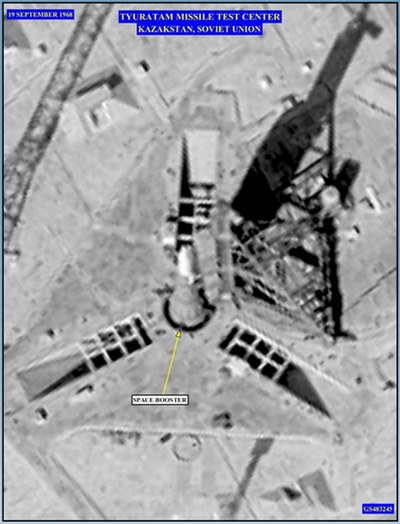Mouth wide shutby Dwayne A. Day
|
| It was a minor event in the Cold War Moon race that illuminated a dilemma that NASA officials faced frequently as the lunar goal drew closer. |
Only a few days earlier Zond 5 had been launched from the large launch complex in Kazakhstan then known as Tyura-Tam and today referred to as Baikonur. It became the first spacecraft to fly around the Moon and successfully land on Earth, splashing down in the Indian Ocean where it was recovered by Soviet vessels (see “Chasing the Zond”, The Space Review, February 9, 2009). It was obviously an important milestone in the effort to send humans to the Moon, and considering that NASA had announced in mid-August that it was planning on sending the manned Apollo 8 mission to the Moon in a few months, naturally the media would ask von Braun who was ahead in the Moon race.
Brandwein briefed von Braun on the Zond 5 mission and von Braun asked him what he could publicly say about the flight. Brandwein said that he could certainly say the mission was an important milestone, but cautioned against claiming that the spacecraft could have supported a manned lunar landing or even an orbiting mission, because it lacked the payload capability. He then suggested that von Braun could “make a personal judgment” that Zond 5 would probably be followed by another unmanned circumlunar flight and that, if it was successful, that could be followed by a manned flight around the Moon either in late 1968 or early 1969. In fact, Zond 6 launched unmanned in mid-November 1968, but suffered several problems, and no manned Zond mission followed.
The intelligence director also explained that von Braun could say that it was obvious that Zond 5 was intended as a precursor manned mission, because its trajectory was shaped to minimize g-loads during reentry. If all the Soviets had wanted to do was shoot a spacecraft around the Moon, they could have used a different trajectory that was unsuited to humans, but would have resulted in an easier recovery.
Von Braun then asked another, touchier question: could he mention anything about the large Soviet rocket that was clearly intended to send humans all the way to the Moon’s surface? The rocket, as big as a Saturn V, had been spotted several times on the launch pad at Tyura-Tam in an area that the CIA had designated “Complex J”, earning it the designation the “J vehicle”, or more colloquially, the “Jay bird”.
This presented a problem. The only information that the CIA had about the J vehicle came from satellite reconnaissance, not any actual flights like the Zond missions, which had been publicly announced by the Soviets. “I told him that this information was still highly classified,” Brandwein wrote.
| NASA wanted the public, and the Congress, to know that the race was real. How could they do that without revealing sensitive information? In most cases they could not. |
However, NASA administrator James Webb had already spoken about the large rocket several times while testifying before Congress (see “Webb’s Giant”, The Space Review, July 19, 2004). Webb’s testimony had been cleared by the CIA. Brandwein told von Braun that if he simply quoted Webb’s statements, he would be fine.
This minor episode highlighted the difficult task that NASA officials faced during the Moon race. Senior officials were granted access to classified intelligence about Soviet space and missile activities. Indeed, some NASA technical experts, like von Braun, were even asked to assess the intelligence themselves and provide their insights to the CIA analysts. NASA officials knew that they were in a race with the Soviets and generally believed that they were ahead in the race to the Moon. But they wanted the public, and the Congress, to know that the race was real. How could they do that without revealing sensitive information? In most cases they could not, and this fact left a legacy after the Apollo program ended, creating the false impression that the Americans had only been racing themselves the entire time. It is an impression that still lingers today whenever the story of Apollo is told.
